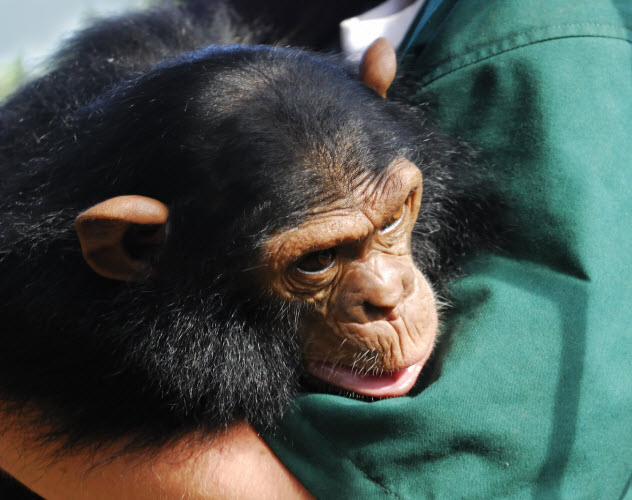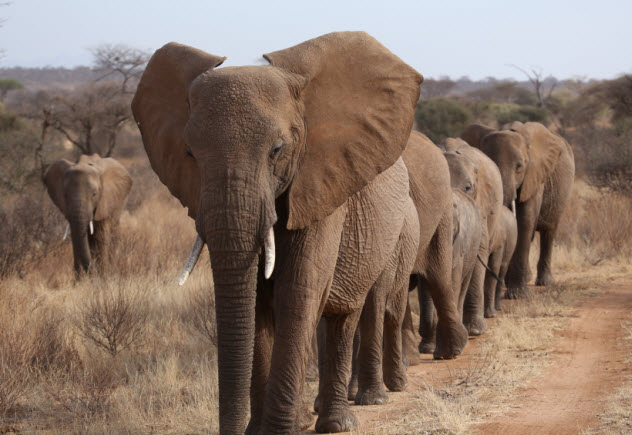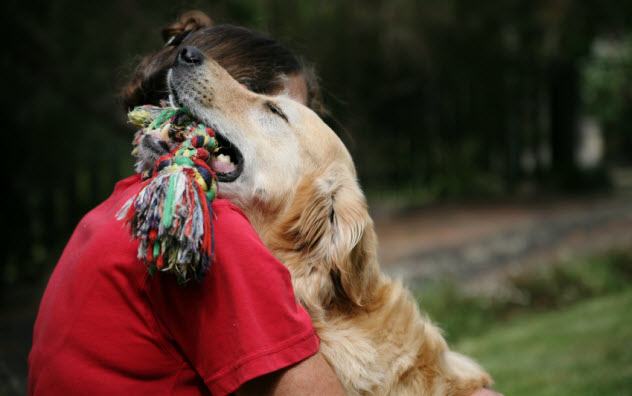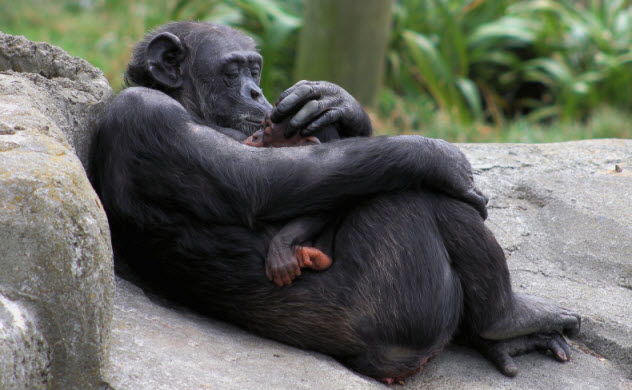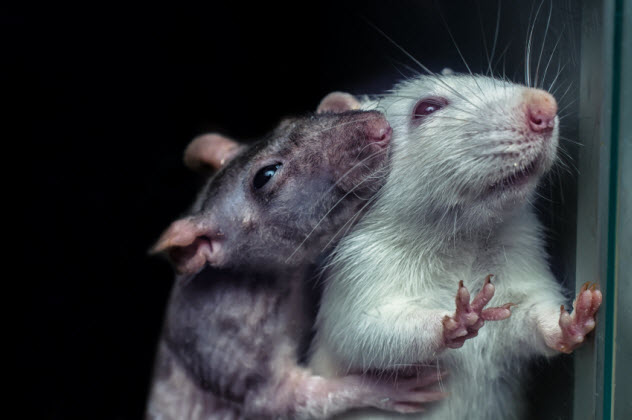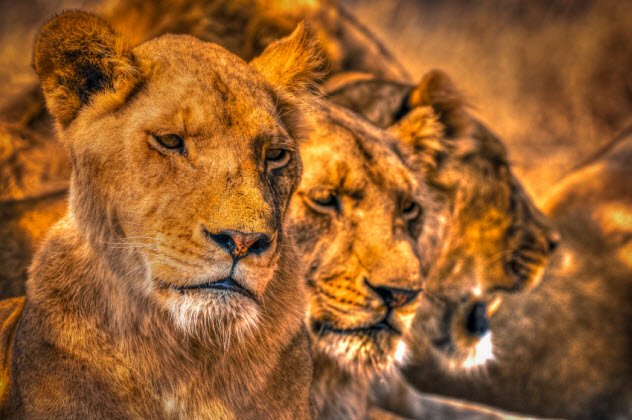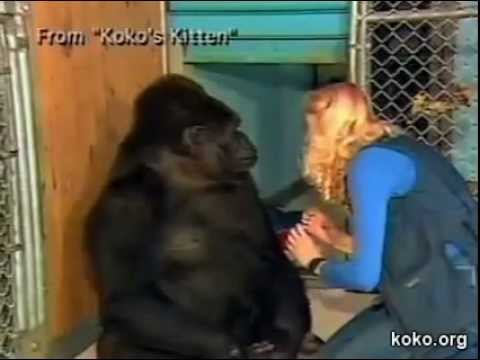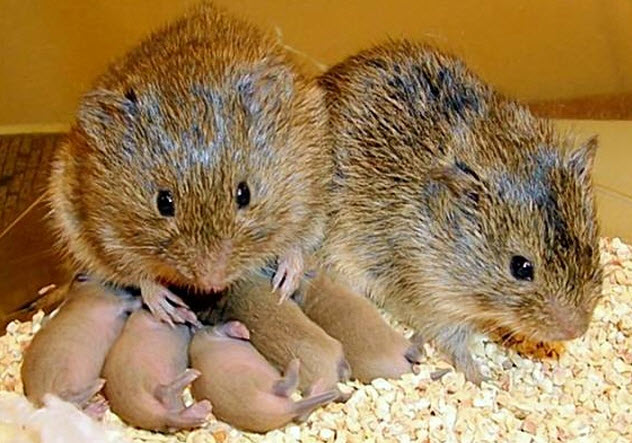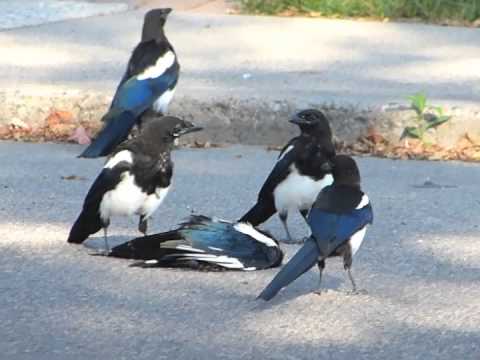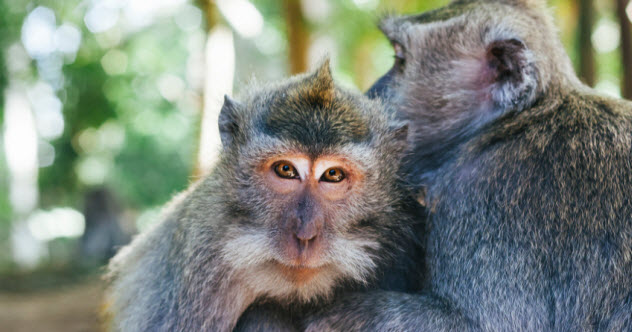There are proven records of animals showing empathy. Several, in fact. Sometimes, animals take care of each other. Sometimes, they show outpourings of grief, and sometimes, they even take care of us. However they show it, though, there are several times when animals have shown empathy—and some of them are in ways that are so much like humans that they will shock you.
10 A Chimpanzee Comforted Her Caretaker After A Miscarriage
Central Washington University once took in a chimpanzee named Washoe. They taught Washoe sign language and tried to raise her as much as possible like a human being to see how well the monkey could communicate. The experiment was a rousing success. Washoe was able to communicate and even form full, grammatically correct sentences. The most amazing breakthrough, though, came completely by chance. One of Washoe’s caretakers, a woman named Kat, was pregnant and miscarried. Distraught, she took a few weeks off of work to get through her pain before coming back. Washoe, who didn’t understand the concept of paid leave, took this as a personal offense and refused to look at Kat when she returned. To make Washoe happy, Kat signed that she was sorry and then explained, “My baby died.” According to the people present, Washoe just stared at her in silence for a long while. Then the chimpanzee signed the word “cry” and ran her finger down Kat’s cheek, mimicking a tear. Later, when Kat’s shift ended and she went to leave, Washoe stopped her, signing, “Please, person—hug?” The chimpanzee, who had lost children herself, was so sympathetic to her caretaker’s pain that she wouldn’t let her go home without sharing a comforting embrace.
9 Elephants Gathered To Mourn A Conservationist’s Death
Conservationist Lawrence Anthony developed a reputation as “the elephant whisperer.” He had the ability to calm down African elephants. He worked in the Thula Thula Reserve, where he spent his time trying to calm down elephants that were unhappy about having been relocated there. The elephants wanted to leave, but he managed to keep them in place, knowing that they would be killed if they left the protected area. Years later, Anthony died of a heart attack. He had not been in the reserve or seen the elephants for 1.5 years when it happened. The elephants, somehow sensing that Anthony had passed, left the reserve and traveled for 12 hours to his home to pay their respects. Just as an elephant will mourn the dead of its own species, they came out for Anthony. In total, two full herds of elephants came in a procession to his home, with each one coming separately. This massive group of gigantic elephants waited on Anthony’s property for two days to mourn his death before they headed back home.
8 Dogs Instinctively Comfort Crying Humans
If you’ve ever felt like your dog really cares about your feelings, you might actually be right. An animal behavior study was recently conducted to see how dogs would react to emotional displays. The scientists took an experiment that was first conducted on babies and decided to see how dogs would react to strangers. Each dog was put in a room with its owner and a stranger. Naturally, the dog would gravitate toward the owner at first. The stranger would then try to get the dog’s attention by talking to it or by humming to it, and the scientists wrote down how the dog reacted. When a stranger pretended to cry, though, the dogs really reacted. When the dogs thought that the stranger was upset, they would leave their owners, nuzzle the crying stranger, and lick his face. Even if they didn’t know who the person was, they would go over and help him if he seemed upset. The people who did the study admit that it’s entirely possible that the dogs were doing this because domesticated animals have been conditioned to expect rewards for compassion. However, dogs get rewards for a lot of different responses—and of everything the researchers tried, the dogs responded to sadness the most.
7 Chimpanzee Mother And Sister Took Care Of A Baby With Down’s Syndrome
We often think of nature as a cruel and unforgiving place—a kill-or-be-killed world where only the strongest survive. Evolution seems to suggest that the weak get cut off by the strong and left to die and that our own tendency to protect the elderly and the ill might be some kind of anomaly in nature. But it seems like that’s not always exactly true. Japanese researchers working in Tanzania spotted something that they’d never seen before. A chimpanzee was taking care of a baby chimp which they described as suffering from “symptoms resembling Down’s syndrome.” The baby held its mouth open like a fish, could barely support itself, and seemed to suffer from a mental handicap. The mother took care of her anyway, carrying her everywhere because she would fall down without her mother’s help. The mother would also raise the child to her breast to let it feed. Even more interestingly, the chimp’s sister helped with the baby’s care when the mother needed to eat. The sister had a major part in the child’s upbringing, so much so that they relied on her. Just like a human, the chimpanzee mother needed help to take care of her baby. When the older sister became pregnant herself and couldn’t help anymore, the handicapped baby died.
6 Rats Protect Each Other And Share Food
Rats have a bad reputation. When somebody betrays us or steals from us, we even call them “a rat,” suggesting that anyone who takes for themselves at the expense of others is just as bad as these lowly vermin. Except that, according to one study, they’re actually a lot more sympathetic than we give them credit for. A group of scientists set up some lab rats in an experiment. If a rat pulled a lever, two things would happen: The rat would be rewarded with chocolate, but another rat would be drowned. The rewarded rat had to watch the water level rise on another rat in another cage and deal with a tough choice: Is it worth drowning a stranger if you get a Hershey’s bar out of the deal? The answer was no. Most of the rats wouldn’t pull the lever if they knew that it would cause another rat to suffer. Interestingly, if a rat had gone through the near-drowning experience before being given the test, they were even more likely to protect the other rats. These rats learned from a bad experience and wanted to keep others from suffering the same fate.
5 A Pride Of Lions Saved A Girl In Ethiopia
In 2005, a 12-year-old girl near Addis Ababa, Ethiopia, was dragged out into the wild and beaten bloody by seven men. Apparently, this was supposed to convince her to marry one of them—which seems like a weird method but is shockingly common there. According to the United Nations, 70 percent of marriages in that area start with a young girl being abducted, dragged out into the middle of nowhere, raped, and then forced to marry someone. All that would have happened to this girl, too, if it wasn’t for a group of lions. When the girl started crying, a nearby pride of lions heard her and rushed to her rescue. The animals pounced on the men and chased them away, saving her before she could be raped and forced into a life of servitude. That’s not all, though. If they’d just attacked the men, it could easily have just been a random lion attack. But they stayed with the girl. The lions waited with the bruised child for about 12 hours—protecting her in case the men came back—until her family found her. And when they did, the lions walked back into the jungle, leaving her safe.
4 Koko Cried For Her Pet Cat
Koko is a smart gorilla. Her IQ has been listed as somewhere between 70 and 95, which means that she’s probably smarter than a few human beings you know. She has a vocabulary of about 2,000 sign language words and has been able to communicate with researchers in an incredibly humanlike way. When her caretakers noticed that all of Koko’s favorite stories were about cats, they decided to get her a pet kitten. Koko named the tailless cat “All Ball” and adored it. She was allowed to play with the cat for one hour each day. Koko would play catch with the kitten and even tried to nurse it. One day, however, All Ball sneaked out of the compound and onto the highway, where she was hit by a car. When the researchers told Koko, she reportedly refused to respond in any way for a full 10 minutes. Then the gorilla started openly weeping or, more accurately, whimpering—which is the gorilla’s way of crying. Koko finally eulogized her pet, signing the words, “Sleep, cat.”
3 Prairie Voles Console One Another When They Are Stressed
Prairie voles are sweethearts that mate for life. When a prairie vole finds that special vole that it wants to spend its life with, he stays with her and both parents take responsibility for the kids together. As it turns out, that involves taking care of each other emotionally, too. Some scientists did a study in which they made a control group of voles watch while an experimental group of voles was shocked with electricity. When the two groups were allowed to reunite, the researchers found that the voles that hadn’t been shocked would console the hurt ones by licking them. The voles only seemed to console other voles that they knew, and they definitely licked more when they knew one had been hurt. All of which told the researchers that this wasn’t just grooming. This was taking care of them. The scientists went a step further, too, and blocked the voles’ oxytocin receptors, which are believed to be responsible for empathy in humans. When they did the experiment again with empathy blocked, the voles stopped taking care of each other. This means that there was a real chemical reaction happening inside their bodies that was making them take care of one another.
2 Magpies Brought Grass For A Dead Friend
Dr. Marc Bekoff of the University of Colorado tells an interesting story about a group of magpies. While riding his bicycle around Boulder, Colorado, he saw a dead magpie lying on the road who had clearly been hit by a car. Five other magpies were gathered around it, looking at it. First, one of the magpies pecked at the dead body, as if nudging it to see if it would move. According to Bekoff, this was similar to how an elephant shows sympathy for a dead friend, although there is no way to know for sure what the gesture meant. The next part, though, seems eerily meaningful. One magpie flew off, took some grass, and laid it down by the dead body as if it were an offering. Then another flew away and did the same, taking some grass and putting it down by its side. The five magpies stood in silence for a few moments and then flew away one by one. It’s possible to debate what the act meant, but Bekoff is convinced that it was a display of empathetic grief, built into the species to keep them united. And as crazy as Bekoff’s story sounds, at least one other person has caught the ritual on tape as shown in the video above.
1 Macaques Refuse Food If Others Get Hurt
Another experiment was done on macaques. The macaques were given a chain and taught that they would be fed if they pulled the chain. The catch, however, was that every time they pulled the chain, another macaque would be shocked. It was an experiment similar to the one done on mice but a little bit crueler—because if the macaques didn’t pull the chain, they weren’t fed at all. Even though it meant risking starvation, 87 percent of the macaques refused to pull the chain if they knew that it would hurt another macaque. In one case, a macaque went a full two weeks without eating rather than deal with the guilt of hurting another animal. It’s pretty impressive but even more significant when you compare that to another study. Because another group of scientists did a similar experiment on a different animal—humans. They paid people to pull a lever that they claimed would shock another person with electricity. That other person was an actor who pretended to be in incredible pain every time they pulled the lever. In the experiment with humans, a full 87 percent of the people pulled the lever all the way to a space marked “Danger! Severe Shock!” even while hearing their victim scream in pain. It was all to get a few dollars that they could have easily earned by getting a job at McDonald’s. Mark Oliver contributes to a number of sites, including Cracked, The Onion’s StarWipe and Listverse. His website is regularly updated with everything he writes. Read More: Wordpress
